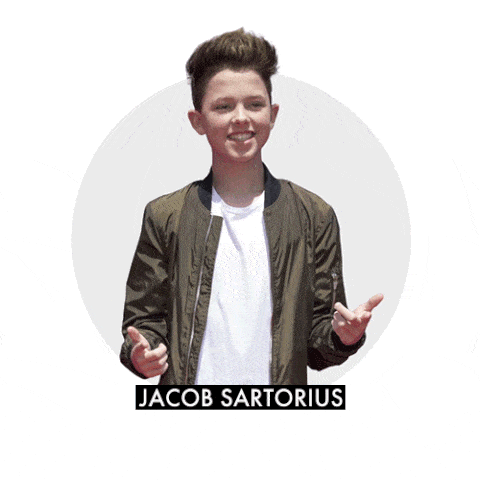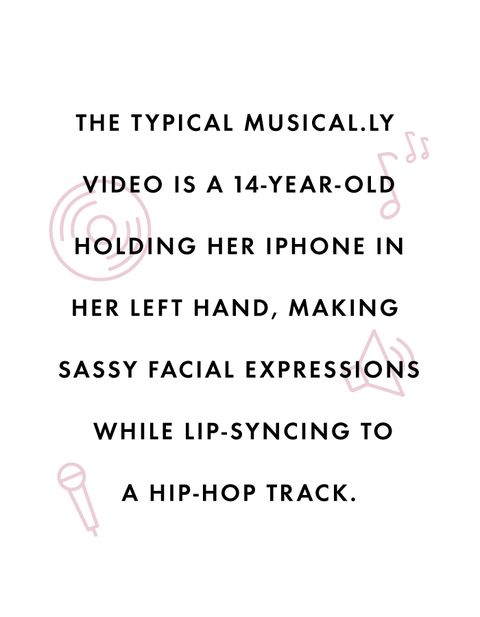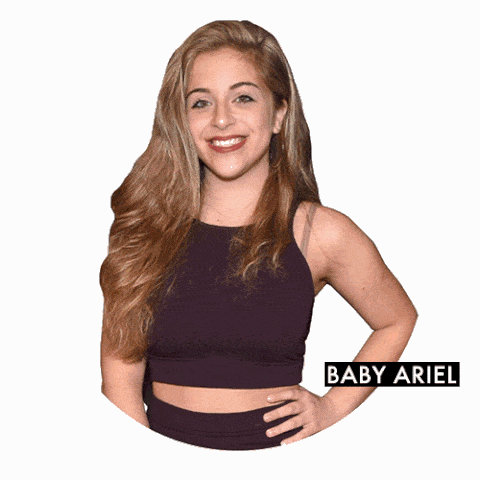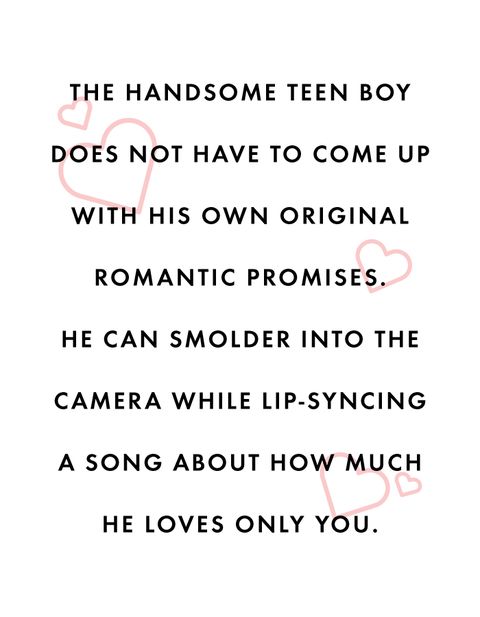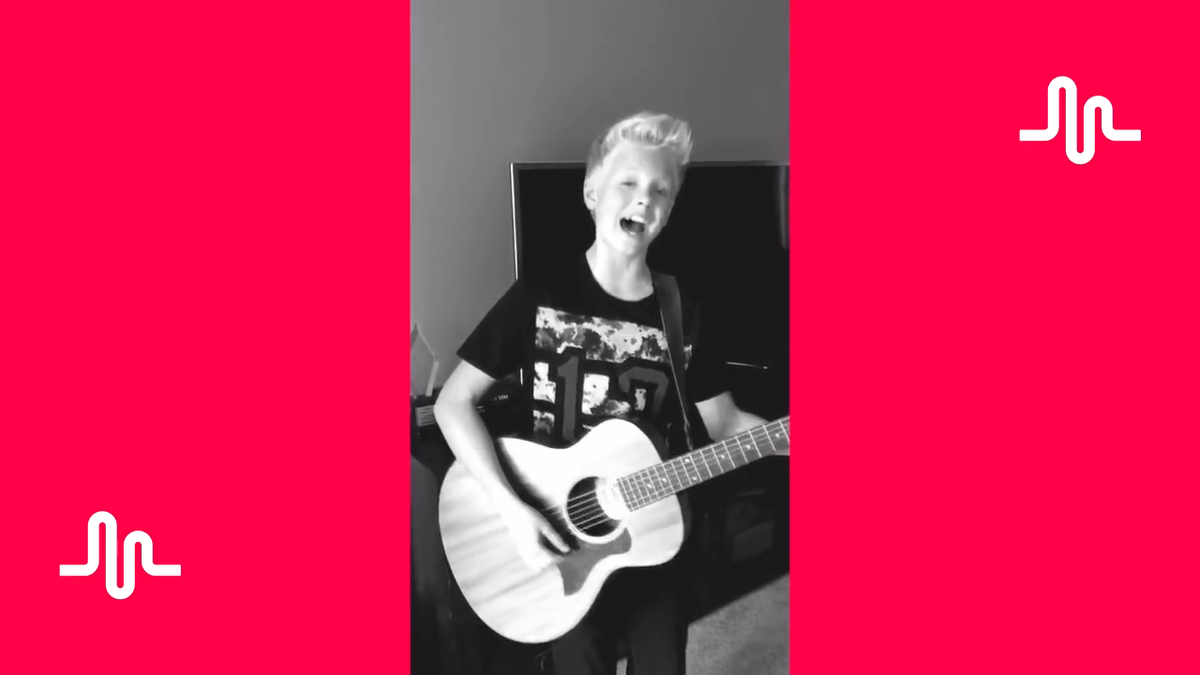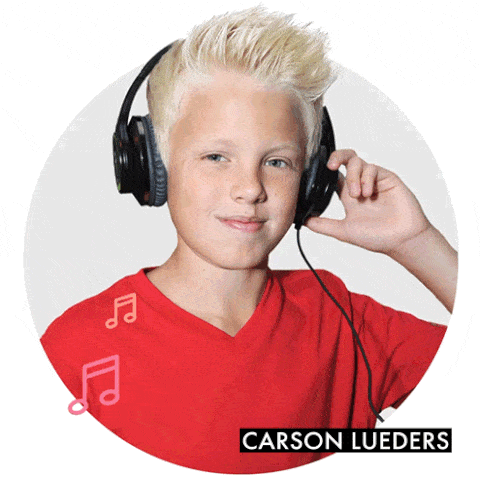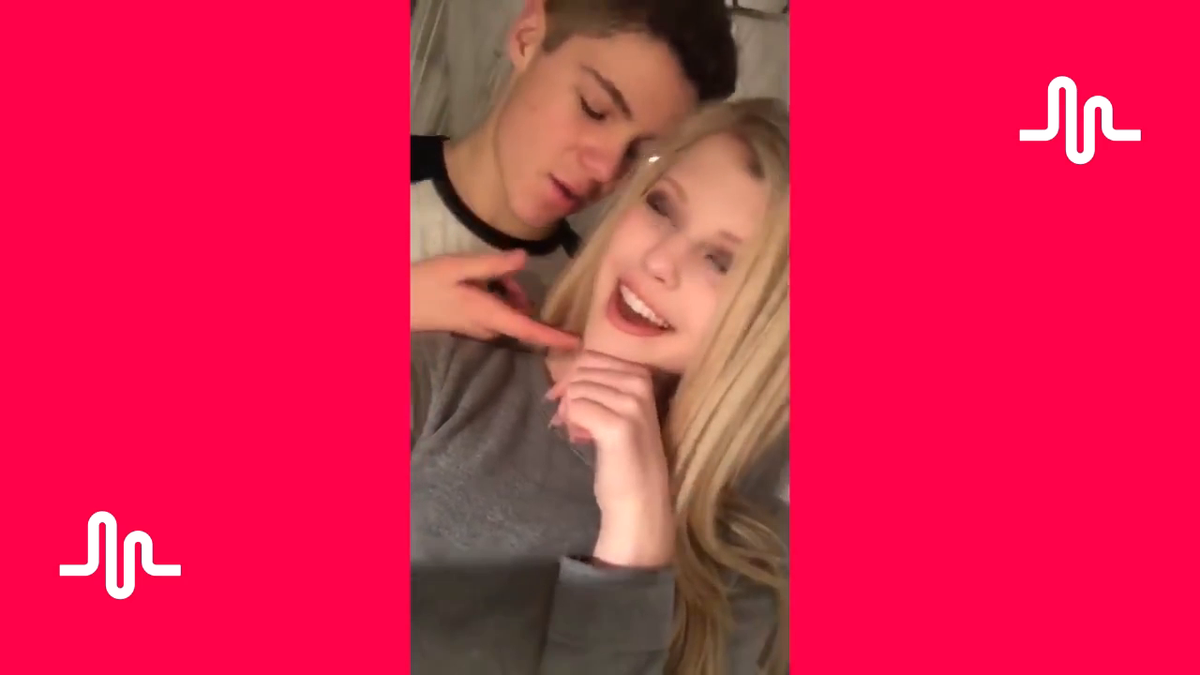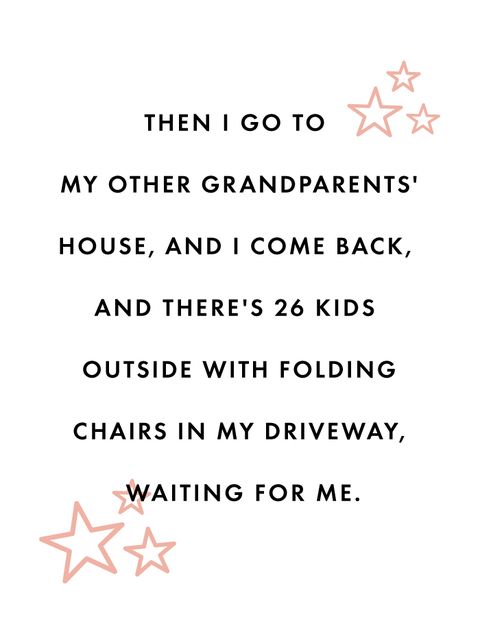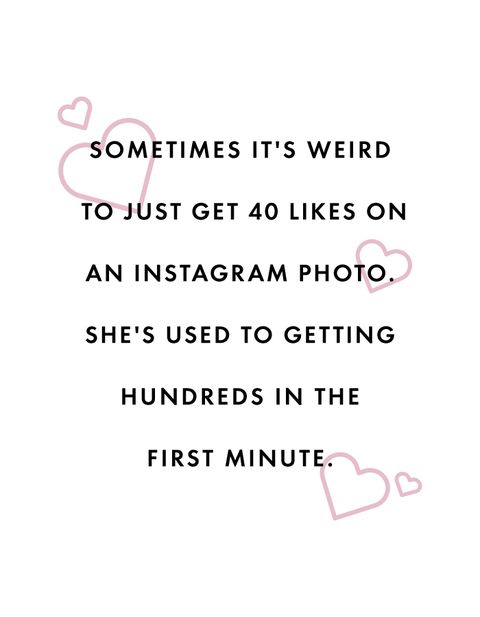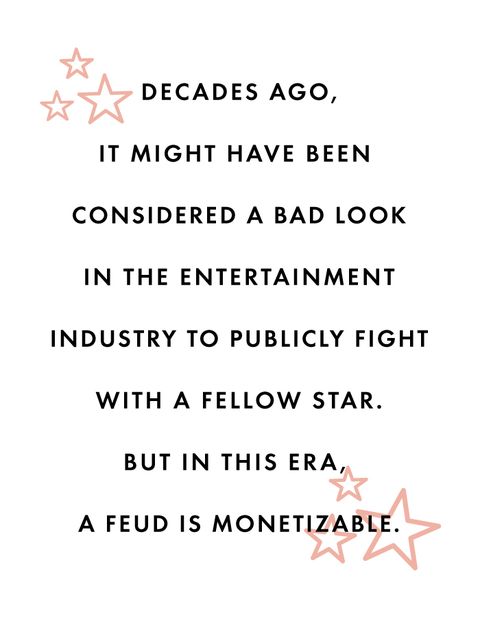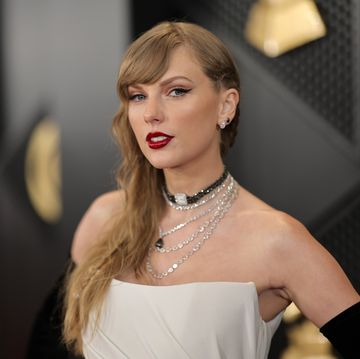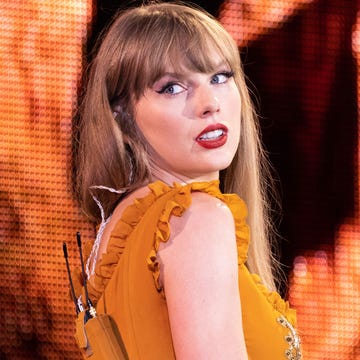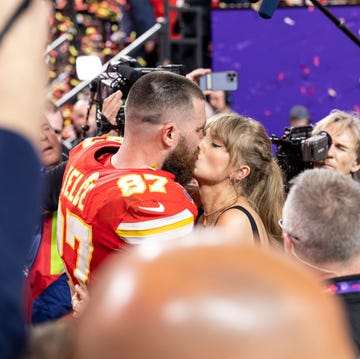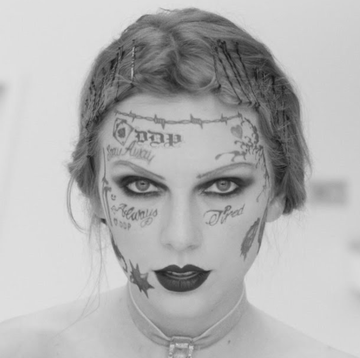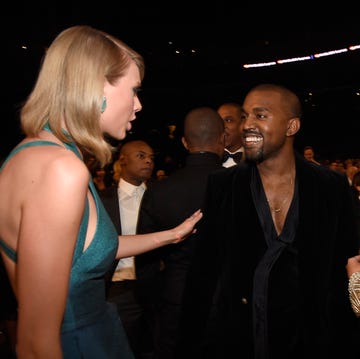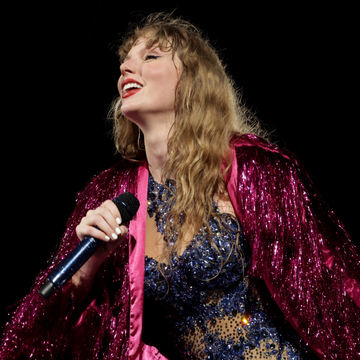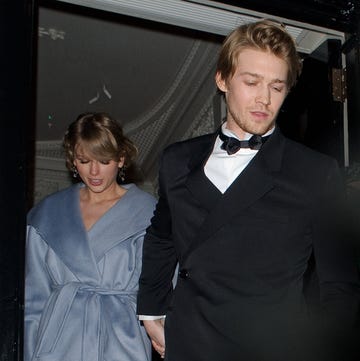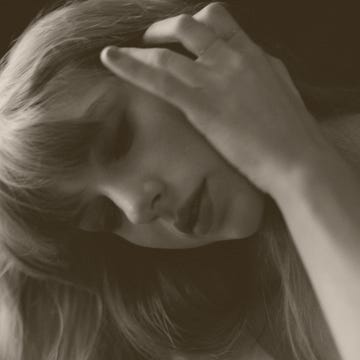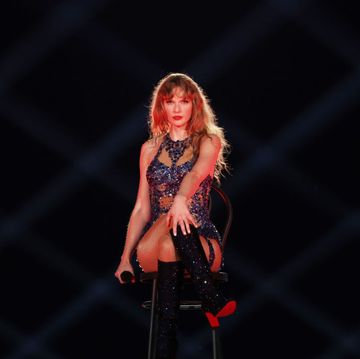Jacob Sartorius appears to have been created in a lab to be the perfect idol for preteen girls. He is slender and tan, with thick, light-brown hair, big eyes, and rosy cheeks. He is 13, but looks much younger. He is textbook eighth-grade cute. Every day, Sartorius tweets and Instagrams phrases that don't just assure his young fans they will someday be loved by a cute boy just like him, but that they are already loved by him. "I want you to be with me"; "You're perfect the way you are!"; "How are you so beautiful?"
In May, he released his first pop song, "Sweatshirt."
The best idea is the one that, once spoken, seems so obvious it's unbelievable that no one has said it before. This is true of "Sweatshirt," which precisely hits a demographic that has just become interested in romance but is intimidated by sexuality. The chorus goes, "So baby if you are not ready for my kiss / Then you can wear my sweatshirt." It is relatable and marketable. A "You Can Wear My Sweatshirt" hooded sweatshirt was on sale for $40 at his recent appearance at the Hamilton Mall in New Jersey. Jacob Sartorius is a bunker-busting smart bomb for the preteen girl heart.
What made Sartorius a star is a social network called Musical.ly, where he posts three times a day to his more than 8 million followers. Launched in 2014, Musical.ly has exploded in popularity in the last six months. It's in the top 25 free apps on the iTunes download chart and has raised $100,000,000 in funding; Alex Hofmann, president of Musical.ly North America, told Variety that 50 percent of American teens are on the app.
At first glance, it can seem kind of dumb: Musical.ly offers clips of popular songs, and top users—or "musers," in the app's lingo—can speed up or slow down the song while making a 15-second video of themselves. This makes it easier to stay on beat.
Essentially, it's a lip syncing app. Musers can also use their own audio, and some post videos of themselves singing or making jokes. They can livestream. A select few have released singles; "Sweatshirt" debuted on the app. But while Musical.ly says kids are starting to make a wider variety of videos, the vast majority are still lip syncing. The typical Musical.ly video is a 14-year-old holding her iPhone in her left hand, making sassy facial expressions while lip syncing to a hip-hop track. The look is very Kylie Jenner: bold matte lipstick, athleisure, long hair under a baseball cap.
Seventy-five percent of Musical.ly's 90 million users are female, according to the company, and 54 percent are between 13 and 24. Popular musers have millions of followers and get hundreds of thousands of "hearts" (likes) on their videos. The app's top star, "Baby Ariel" Martin, is a 15-year-old from Florida with more than 11 million followers. Her strong eyebrows give her a very expressive face—a Cara Delevingne with dramatic acrylic manicures, mouthing lyrics by Fetty Wap. Like most other mega-musers I spoke to, Baby Ariel said the secret to a good Musical.ly video is "good lighting."
It has been suggested that Musical.ly could disrupt the music industry. "Bite-sized content is the biggest change for music since the music video," Hofmann said in an email. But you can also think of the Musical.ly videos as millions of little ads for songs, something that should warm the industry's collective heart. As Hofmann pointed out, songs that blow up on Musical.ly can then get big on iTunes and Spotify, as with "Don't Mind" by Kent Jones, "Do It Like Me" by DLow, and "Trndsttr" by Black Coast.
What Musical.ly has disrupted is the teen idol poster. Who needs a static photo of a cute boy with his signature scribbled across the bottom? Musical.ly offers, right there in your phone, privately, away from your parents, a moving cute-boy poster who never stops finding new ways to say he loves you. In the tender tweets of Jacob Sartorius:
To understand Musical.ly's magic, you have to understand the slowly formalizing social media economy. Most influencers, whether they got big on Instagram, Twitter, Vine, or whatever, eventually create a YouTube channel. YouTube is one of the easiest networks to monetize. Post a video, and YouTube will pre-roll an ad and split the money with you.
While charisma and confidence and a sense of humor matter on YouTube, these are human beings we're talking about, so naturally many of the most popular YouTubers are teenagers who are very good-looking at a very young age. Yet even if your face is the draw, you have to have something to talk about. Attractive teen girls can do makeup tutorials—Buy these products and you can be pretty like me. The content is limitless: there are always new products to test and new looks to try. (Even Baby Ariel is selling a line of lipsticks; a five-pack costs $65.) But what can attractive teen boys do? They smolder.
The boys who smolder on social media have so expertly mastered the art of manipulating your emotions that it's unsettling to watch. They highlight their cheekbones by turning to the three-quarter shot, they tilt their head so their eyes look bigger, they run their hand along their neck or through their hair. They all have the same haircut. It's a grown-out version of the Brooklyn Fascist—short on the sides, pretty long on top, blow-dried back and hairsprayed enough to stand unnaturally tall. The hair is very important. Somehow it gets better each time they touch it. And they touch it a lot.
The Smoldering Boys often offer dating advice—how to tell if a guy is flirting, how to tell if a shy guy likes you, things girls do that guys love, strange but attractive things girls do, what guys don't understand about girls, how to get guys to approach you, how to flirt over text (sponsored by AT&T). But the underlying message is always the same: yes, you could date me.
Musical.ly gives these boys something to say. Drake can be a Smoldering Boy's Cyrano de Bergerac—a ghostwriter for the inarticulate flirt. The handsome teen boy does not have to come up with his own original romantic promises. He can smolder into the camera while lip syncing a song about how much he loves only you.
"Will you still love me when I'm no longer young and beautiful?" Jacob Sartorius lip syncs as he looks deeply into his iPhone's camera lens. He projects vulnerability and undying love. He winks at "beautiful." He runs his hands through his hair. His face shifts to confident private conspiracy: "I know you will, I know you will."
Almost every single day, Sartorius is at the top of the leaderboard, Musical.ly's ranking system. He typically gets between 3 and 4 million hearts per 24 hours. After he released "Sweatshirt" on Musical.ly, it cracked the top 10 on iTunes. He's posted videos in which he lip syncs his own song. One 15-second clip has 1.18 million hearts and 27,100 comments.
"He's played it incredibly smart how he's marketed himself," Xavier Di Petta said of Sartorius. Di Petta, once a teenage social media mogul himself with multimillion-follower Twitter and Instagram accounts, now runs a digital marketing firm, Well & Well. "Of course, 10-year-old girls are always going to fangirl over Justin Bieber. But he's 20-something. Even in their heads, if they think they're going to marry him, they're realistic that that's quite a ways away. When they see Jacob, they're like, 'Oh, he's the same age as me.'" He could be their boyfriend.
Smoldering Boys are about a quarter of the top 25 kids on Musical.ly's leaderboard. (The rest are girls who project an aspirational confidence.) Popular musers in that echelon include Sartorius, Blake Gray (age 15, 2.4 million followers), Johnny Orlando (13, 2.3 million followers), and Mark Thomas (15, 2.2 million followers), as well as some older guys who rose to fame on different platforms, like Cameron Dallas (21, 7.5 million followers), Christian Collins (21, 3.7 million followers), and Paul Zimmer (20, 2 million followers).
One of the Smoldering Boys, Carson Lueders, turns 15 this July. Like Sartorius, he has an angelic face and has been similarly savvy about marketing. He's tan with light blond hair swept upward like his social media peers. Unlike most musers, however, Lueders usually records himself actually singing on Musical.ly. Lueders has been playing guitar since he was five. Two years ago, he and his mom moved from Spokane to Los Angeles part time to pursue his career. He started posting his music on YouTube, where he has 519,000 subscribers, and Keith Urban invited him on The Viewin September 2013. In November, he released an EP titled "All Day" for $5.94 on iTunes. But in just a few months, he said, Musical.ly has given his career a huge boost. He has 2.8 million followers on the app.
Many teenage social media stars—from Vine, YouTube, Instagram, and now Musical.ly—go on tours together to meet fans, like Magcon or Digitour, which sold 300,000 tickets in 2015. Lueders is going on a Boys of Summer Tour with other musers. When he meets fans, they don't ask for an autograph on a poster. They ask to do a Musical.ly with him, usually of his own song. What's it like to be adored by so many girls at his age? "Sometimes I don't even realize all the girls are there," Lueders said. "And then I'll be out, going to the mall or just doing anything, [and] I'll get recognized: 'Hey, are you that kid from Musical.ly?"
No matter how cleverly these teen stars cultivate their fame online, few are prepared for the intensity of interest that can follow. Loren Gray Beech, who goes by the professional name Loren Gray, joined Musical.ly last summer because her other friends were doing it. Gray is stunningly beautiful. She has blonde hair, full lips, and perfect skin. In her Musical.ly videos, she wears dramatic makeup and lip syncs while making facial expressions that look genuine and winking at the same time. It makes her seem cool but inclusive, like we're all in on a joke together. In less than a year, she's collected 7.8 million followers.
In June, Gray, who's from outside Philadelphia, visited her grandparents in Ohio. Gray's fans scrutinize everything she posts, and she'd inadvertently given away her location when she posted a picture with a street sign behind her. "So at first, three girls show up, and two boys show up." A surprise, but not a huge deal.
"The next day, three people come knocking on the door in the morning. Then in the afternoon, four more people knock on my door. Then I go to my other grandparents' house, and I come back, and there's 26 kids outside with folding chairs in my driveway, waiting for me." Gray was grateful for her fans, if a little overwhelmed. She turned 14 in April.
She has a post office box to accept letters, and people started mailing her gifts. But these gifts often took an odd form: used purses, or necklaces with another girl's name spelled out on them. Her mom realized that these kids couldn't ask their parents to buy them something to mail to a stranger online. So they mailed their own stuff. At one point, her Twitter account got big in Japan, and she started getting a lot of Japanese candy in the mail. But her mom wouldn't let her eat it, because, obviously, "you never know."
Gray is a sharp analyst of the social media culture swirling around her, particularly the way it places strange pressures on the boys, but also offers distinct rewards. Of the Musical.ly fans, she said, "there's a different standard in the sense that they look up to girls. But they adore the boys." This creates a divide in what boys and girls do on the app. The girls lip sync, but also showcase talents—dancing, singing, gymnastics. With boys, "the ones that get popular are cute faces." Though those boys are famous, they're still more accessible. "I guess with like actors on TV, you know there's a reality where you will never get to talk to them," Gray said. "But on social media there's a whole 'nother world where you have the opportunity to talk to them and meet them and go to tours."
Among these kids there's a telling bit of slang: to go, or to be, "Hollywood." The meaning is intuitive—to get uppity—but the path to the label is less so. It happens when social media stars stop interacting with their fans. The difficulty of not being "Hollywood" is clear when you think about the raw numbers. "Once people see you're not answering people, you're not following your fans anymore, and you kind of lose connection with your friends, then you're 'Hollywood.' You think that you're better than everyone. That pushes people away and makes a lot of fans turn hostile toward you."
Gray felt sympathy for these expectations faced by the smoldering boys. The fans, she said, "want to know that you care about them—especially, especially the boys. The [fan] girls rely so much on hearing 'Oh you're beautiful,' 'I love you.' … And the minute you stop giving that to them, they turn on you like that." One girl claimed Sartorius pressured her to send nude photos on Facebook. (Sartorius officially said, via his Twitter, that the messages came from a fake account—he didn't even have a Facebook account until months after the messages were allegedly sent.) Another girl pretended to want to take a photo with him, but instead smacked him hard on the head.
Gray did not say Jacob Sartorius was Hollywood. She repeatedly said he was a nice, sweet kid. And yet, even as we sat in a sun-drenched Soho agency's meeting room with her mom, even as a waterfall artfully, tastefully trickled in the background, and her agent cooed that she was a potential superstar, it was clear Gray had felt the sting of getting left behind. She and Sartorius had become friends as they rode the wave of Musical.ly fame together. But something happened that she doesn't totally understand. "I went on a different tour" than Sartorius, she said, referring to the various social media star tours. "On some tours they don't want you communicating with other influencers, which…" She raised her eyebrows. "He kind of just changed his number, didn't give it to me, and that was just the end. We just don't talk anymore."
In some ways it's easier to relate to other social media influencers than the kids back home. Carson Lueders is friends with Baby Ariel and Sartorius: "The app kind of grew us and then we became friends with each other." (A video of the three of them lip syncing to "Sweatshirt" got more than 1 million hearts.) Baby Ariel told me she's closer to her social media friends than her high school friends, who have a hard time relating to all the travel and media demands. Lueders said his Spokane friends might spend an afternoon playing Xbox, which is just a very different lifestyle than the one he has now in L.A. "If we go to like a movie premiere or red carpet … we'll have girls stopping us, like, 'Can we get a picture?'"
Loren Gray was more blunt about how her social media success affected her IRL social life. "I have one friend left from school," she said. She explained that as her Musical.ly stardom grew, "of course there's going to be backlash, because that's just how girls are in middle school." She didn't have "wiggle room," she said, to be herself. "I didn't come from a huge town. People aren't used to that. They aren't used to seeing someone be successful." Once a straight-A student who wanted to become a scientist like her dad, now Gray goes to an online school that has a gifted program.
Like Lueders, Gray started making friends with a new circle of elite social media users still not old enough to drive. Her best friend is Mark Thomas, another top muser who has a new single out. (It's called "Selfie.") She and Thomas go to the mall together, and "sometimes we won't post, we won't Snapchat or anything while we're together, or at least in public." Otherwise kids would find them.
They've also found a way to recreate the unfamous experience online. "All of us, like all social media kids—or least my friend group, there's like 60 or 70 of us—we all have low-key Instagram accounts, where we just follow each other," Gray said. The accounts are private. "We can post whatever we want, say whatever we want, and we're not worried about offending anyone or about anything being misconstrued, because it's just us." Her mom added, "They can still kind of be kids, like they were before." But sometimes it's weird to just get 40 likes on an Instagram photo. She's used to getting hundreds in the first minute.
"I want to transition out of social media eventually," Gray said. "You see those YouTubers, they hit their peak and then they fizzle out and you don't hear about them anymore." She now has a whole team and has been making trips to New York for castings. She's taking singing lessons so she can move into "acting, singing, modeling" smoothly. "Social media doesn't last forever," she said. "There's always going to be new 13-year-old girls who catch the attention of your fans."
There is so much attention on these Musical.ly kids that others have figured out how to soak up the spillover via "clickbait." Clickbait means something different among influencers than it does among online journalists. In social media, it means, for example, creating a YouTube video with a muser's name in the title and photo in the thumbnail, even if it's not actually about that person. A video by a teen girl called "LOREN GRAY BLOCKED ME!!!!!!!!" has more than 400,000 views. (Her videos that aren't related to Musical.ly typically get a thousand views or less.) "You can type in 'reacting to loren gray' and that's probably $100,000 worth of videos with my name in the title," Gray said, referring to money made from YouTube ads.
Late last year, 19-year-old YouTuber RiceGum (real name Bryan Le) started making YouTube videos about Musical.ly stars. The first one, posted in December, was titled "THESE KIDS MUST BE STOPPED!" Le is wryly funny, and his ironic outrage drew 7.4 million views. He made more—Parts II, III, and IV. In January, after some kids responded, "Jacob Sartorius ROASTS ME!!" (5.6 million views). In February, "LOREN GRAY ROASTS ME!" (5.3 million views). He kept getting roasted and counter-roasting. In April, Le hit 1 million subscribers. In June, 2 million.
Decades ago, it might have been considered a bad look in the entertainment industry to publicly fight with a fellow star. But in this era, a feud is monetizable, not for a tabloid, but for the stars themselves. And so, in June, Sartorius posted a video on his own YouTube channel titled, "Freaky Friday | Jacob Sartorius (Feat. RiceGum)." The video got almost 3 million views in 10 days.
"Rice is like a more entertaining version of TMZ," Gray said. She thinks he's nice, and doesn't hold his YouTube persona against him. But the five-year difference in their ages is a big one. "There's definitely a divide because YouTubers kind of don't see eye to eye with us, because they don't really understand what we do."
Of course, it's possible that most outside the preteen demographic don't understand what Musical.ly's stars do because its appeal is esoteric and limited. It would not be the first social media apps to go through a rise and fall: Dubsmash, an older lip syncing app, has faded, and Vine has reportedly lost half its top users this year. When I asked Xavier Di Petta, who created several incredibly popular social media accounts when he was a teenager in Australia—including @HistoryinPics and @EarthPix, which has almost 9 million followers on Instagram—what he thought, he was dismissive: "I think it's a fun little app and the guys behind it are quite smart. But will it last? I don't think so." Teens' social media whims are unpredictable. Musical.ly's videos were too repetitive.
But a few weeks later Di Petta sent me a Facebook message: He's planning on launching a Musical.ly influencer network. Details TBD. "Did a 180 after I did some investigative work," Di Petta said. "It truly is the next big platform."
All Motion Graphics by Crystal Law

